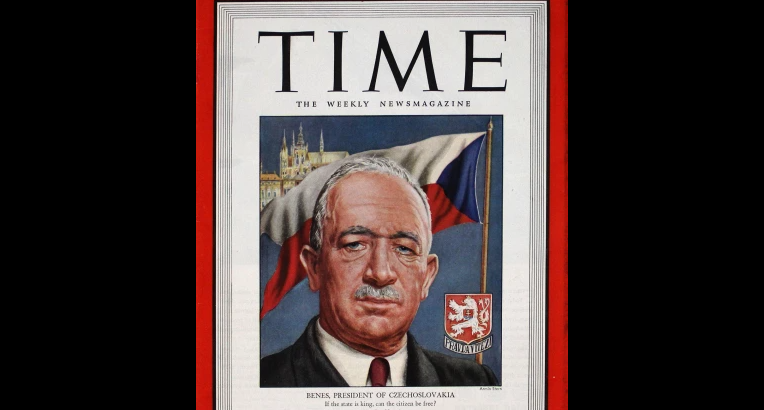Created on May 14, 1955, the Warsaw Pact, also known as the Treaty of Friendship, Co-operation, and Mutual Assistance, was a collective of Eastern European countries prompted by West Germany joining NATO in the Paris Agreement in May 1955.
Edvard Beneš (28 May 1884 - 3 September 1948)
Edvard Beneš was born in Kozlany, Bohemia during the Austro-Hungarian Empire’s rule, but by October 14, 1918, he lived in a different nation, as the empire collapsed in place of the then-new Czechoslovakia. He served as the council chairman for the League of Nations to support the balance of powers in Eastern Europe, creating the “Little Entente.” Eventually, Beneš would succeed Masaryk as the Czechoslovakian president, faced with the threat of Germany, and the rest is history.
Milena Jesenska (10 August 1896 - 17 May 1944)
Milena Jesenska life was rather adventurous, including her commitment to a mental hospital for nine months, due to her father and his dislike for her then-boyfriend, Ernst Pollak. After her marriage to and divorce from Ernst, she remarried to Jaromír Krejcar and had a daughter with him. Between both marriages, she was dedicated to journalism, which she engaged in as she document the activities of Nazi Germany over Czechoslovakia. Unfortunately, in her efforts to help those negatively affected, she was arrested and deported to a concentration camp.
The Czech Response to the American Civil Rights Movement
The American Civil Rights Movement became a method of propaganda against the United States to gain support and sympathy from non-socialist states. The Czechoslovakian government would invite activists to the nation so that communism would be promoted, including singer Paul Robeson, who would sing at the Prague Spring classical music festival in 1949. Between the 1960s and 1980s, Czechoslovakia continued to push communism in African nations, broadcasting the benefits of communism and what it would provide to Africans.
The Czech Republic's Communist-Era Architecture
For the Communist countries in Eastern Europe, the necessary rebuilding following World War II was accomplished in the construction style that the Soviet Union popularized. As a result of this period, the Czech Republic has many buildings and monuments that differ significantly from the historic ones surrounding them, serving as a reminder of its Communist era.
Věra Čáslavská: Athlete and Activist
Athletes have long been using their high-visibility platforms to comment on social issues and raise awareness. Věra Čáslavská, a gymnast from the now Czech Republic, is not only famous for her unparalleled success at the Olympic Games but her strong stance against the Soviet invasion of her country.













